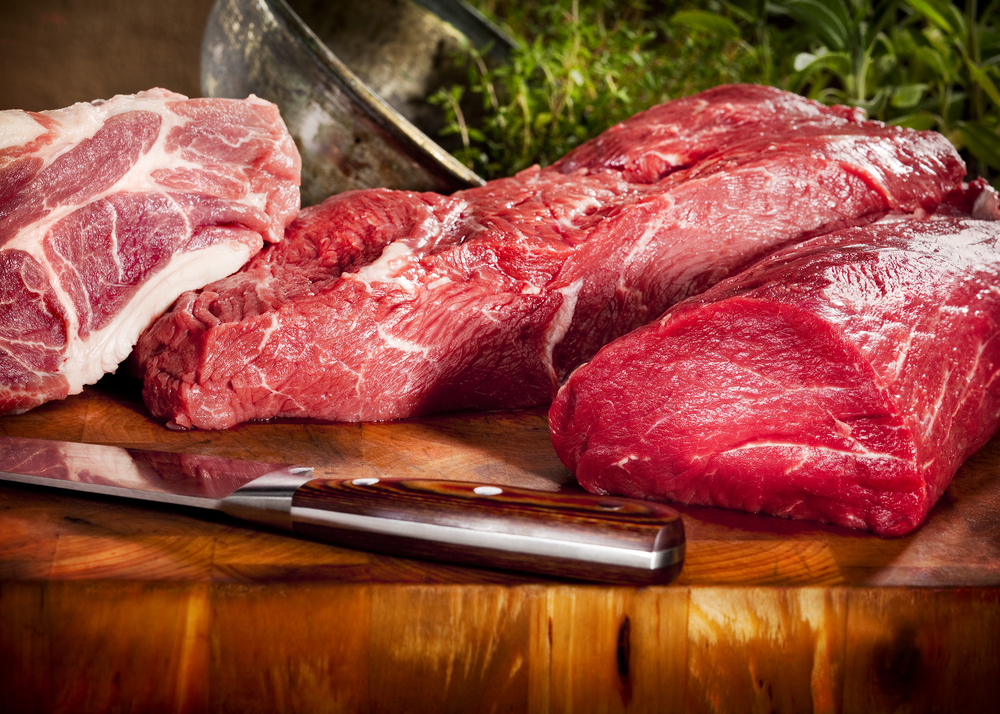
That image of a caveman gnawing on a hunk of bison meat may need a makeover. A new chemical analysis of modern diets suggests Stone Age humans ate less meat than thought.
The findings, published in the November issue of the American Journal of Physical Anthropology, may explain why many archaeologists estimate that prehistoric people got most of their calories from lean meat or fish when modern humans would be literally poisoned by such a protein-heavy diet.
"When you look at estimates of people's diets in early archaeological interpretations, it's very animal-protein heavy, and that's very hard to explain physiologically," said study author Tamsin O'Connell, a University of Cambridge researcher. "We are suggesting that animal proteins were less important overall."
Diet sleuths
To see how much meat ancient people ate, archaeologists rely on the fact that protein is the only macronutrient that contains nitrogen. Different foods have different ratios of heavy and light nitrogen isotopes, or atoms of the same element with a different number of neutrons. So in a given ecosystem, scientists can reconstruct ancient diets by measuring the fraction of heavy-to-light nitrogen isotopes in fossilized bones.
But the body also preferentially stores heavier isotopes of nitrogen, so scientists calculate an offset to adjust for that tendency when determining what a person actually ate. Historically, the offset was derived from studies in which animals were fed diets with different protein amounts. [7 Perfect Survival Foods]
Using that offset, many studies estimate that between 60 and 80 percent of the prehistoric human diet came from proteins, with most of that from animal sources.
Get the world’s most fascinating discoveries delivered straight to your inbox.
That was surprising because no more than 45 percent of modern diets come from protein of any type.
"Even if you look at polar, Arctic dwellers, they have a lot of protein, but they have even more fat," she said. Anything greater introduces toxic amounts of nitrogen into the body.
Balanced eaters
That contradiction led O'Connell to wonder if the offset was wrong because it relied on animal estimates, not humans.
To find out, her team took human blood samples from a study where scientists meticulously re-created people's usual diets, measured exactly how much they ate over a week, and took precise samples of each meal. By comparing the nitrogen isotope ratios in the food and human blood samples, they were able to estimate how much heavy nitrogen the human body stores. (They then extrapolated their estimate for blood samples to human hair and to bone.)
Previous estimates based on animal studies were too small and thus inflated how much animal protein our ancient ancestors ate, she said.
Instead, the first farmers, who lived around 12,000 years ago, likely ate no more than 40 to 50 percent of their protein from animal sources. Those people ate a diet more similar to subsistence farmers in modern-day India or China, O'Connell said. Hunter-gatherers from the Paleolithic period also ate less meat, she added.
"We are suggesting that animal proteins would be less important overall and that's particularly true for interpretations of Neolithic farmers," she said. "What that would mean is that they are having more of a balance of animal and plant proteins in their diet, suggestive of a mixed existence strategy.”
Follow LiveScience on Twitter @livescience. We're also on Facebook & Google+.

Tia is the editor-in-chief (premium) and was formerly managing editor and senior writer for Live Science. Her work has appeared in Scientific American, Wired.com, Science News and other outlets. She holds a master's degree in bioengineering from the University of Washington, a graduate certificate in science writing from UC Santa Cruz and a bachelor's degree in mechanical engineering from the University of Texas at Austin. Tia was part of a team at the Milwaukee Journal Sentinel that published the Empty Cradles series on preterm births, which won multiple awards, including the 2012 Casey Medal for Meritorious Journalism.


